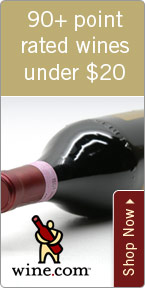Why Sulfur Is Used In Making Wine

Wednesday - September 15, 2010
| Share
 Del.icio.us
Del.icio.us
|
The subject of sulfur in wine always seems to be taboo. But it is an important area to understand since there are many reasons why sulfur is used in vine growing as well as wine-making. In addition, many people can react badly if the amount of sulfites (a derivative of sulfur) is too high in a wine.
The first area where sulfur comes in contact with the grapes is in the vineyard. Elemental sulfur is dusted on vines during the growing season in order to prevent mold and mildew. Sulfur combined with the moisture on the leaves produces a mild acid, which prevents many of the diseases associated with fungal growths in vines. It is applied to the vines every 10-20 days until about a month before harvest. If the amount of sulfur used in the vineyard is too high, the resulting wine during fermentation can create a compound known as hydrogen sulfide (H2S). This compound has a particularly unattractive “rotten eggs” aroma, which can be remedied by racking the wine and giving it more oxygen contact.
But this process of adding oxygen to the wine also may result in another byproduct, which is “oxidation,” or having the wine seem older or more aged that it should be. And if the hydrogen sulfide problem is not fixed properly, the winemaker also runs the risk of keeping H2S in contact with the ethyl alcohol in the wine, which can result in a compound called ethyl mercaptan, which can smell like rotten leeks or onions. Obviously these aromas must be kept out of the wine. So it is very important that vine growers monitor just how much sulfur they are putting in the vineyard and how much of it ends up in the wine.
Sulfur also is added to the wine when the grapes arrive at the crusher, where it is added in the form of sulfur dioxide (SO2). This helps to prevent deterioration of the grapes before the fermentation process begins. Once the fermentation ends, the alcohol in the wine is attacked by oxygen and runs the risk of becoming acetic acid, aka vinegar. SO2 prevents this process, and it also is added just prior to bottling as a preservative. This is perhaps the most harmful form of sulfur in wine as it is also known as sulfite. SO2 also presents an aroma of burnt matches - an altogether unpleasant experience for a wine drinker. Not to mention that there are many people who have allergic reactions to this compound.

|
If you are allergic to sulfites and like to drink wine, you should look for wines that are labeled specifically “100 percent organic.” These are wines that are produced with grapes that are certified 100 percent organically grown and do not have any added sulfites. There are some other labels that you should be aware of as well.
The label “organic” refers to wines that have at least 95 percent of their ingredients from certified organic sources. These wines may have an additional 100 ppm of sulfur dioxide added to them. The label “Made with Organically Grown Grapes” refers to wines that have at least 70 percent of their grapes from organic sources. These wines may have sulfur dioxide added as well.
I have yet to taste a wine that has been “desulfited.”
And as long as wine is made, it will have some type of sulfur in it. I feel bad for those who are truly sensitive to sulfites. Thankfully for the rest of us, wine is not taboo.
Note: I am deeply indebted to Bruce Neyers for sharing with me his knowledge of the chemical processes of sulfur in winemaking.
Recommendations: 2005 Etude Cabernet Sauvignon ($75) There are wines that always make a real impression because of their consistent greatness. This is one of those wines. Every time I drink it, it makes me stop and say “Wow, this is really good stuff.” 2008 Astica Malbec ($8) Under 10 bucks, great value, round, black currant, black cherry, spices and, again, a great value.
Roberto Viernes is a master sommelier. rviernes@ southernwine.com
Roberto Viernes is a master sommelier. E-mail .(JavaScript must be enabled to view this email address)E-mail this story | Print this page | Comments (0) | Archive | RSS Comments (0) |
Most Recent Comment(s):












